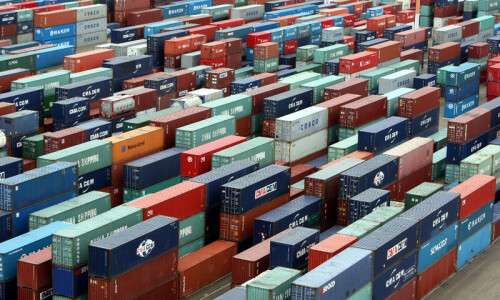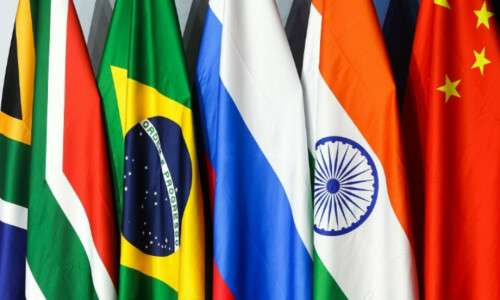Pakistan’s Merchandise Exports Show Slow Growth Amid Global Challenges
Introduction
In December, Pakistan’s merchandise exports saw a modest rise of 0.67%, marking a slowdown in the export growth momentum for the second consecutive month. This development comes amidst a backdrop of reduced international demand, primarily from key markets like North America and Europe. However, analysts remain hopeful that export demand will pick up pace as we move into 2024, with some positive indicators suggesting a possible rebound.
In this article, we will delve into the latest export figures, key drivers of growth, and challenges faced by Pakistan’s exporters. We will also explore the implications of this trend on Pakistan’s trade balance and the broader economy, alongside insights into government measures and strategic steps required to strengthen the export sector.
Export Growth Trends: A Slowdown in December
H2: December Export Performance
In December 2023, Pakistan’s total merchandise exports stood at $2.84 billion, a slight increase from $2.82 billion in the same month last year. This reflects a modest growth rate of 0.67%. While growth was achieved, it represented a significant slowdown when compared to the rapid expansion seen earlier in the fiscal year. Export growth had been relatively robust in the initial months of the fiscal year, driven by improved global orders and favorable exchange rates.
H3: Monthly Breakdown and Growth Rate
- July: 11.83% growth
- August: 16% growth
- September: 13.52% growth
- October: 10.64% growth
- November: 8.98% growth
- December: 0.67% growth
As evident from the monthly figures, there was a marked decline in the growth rate towards the end of the calendar year, influenced largely by the seasonal slowdown typical of December, compounded by ongoing global economic challenges.
H2: Key Factors Behind Slowdown in Exports
Several factors have contributed to the deceleration in export growth in December, including:
H3: Reduced Global Demand
A significant reduction in international demand has weighed on export performance. The global economy continues to grapple with challenges like inflation, trade tensions, and shifting consumer behaviors. Despite global supply chain issues stabilizing, the demand for Pakistan’s exports, especially in textiles and garments, has softened, particularly from traditional markets like Europe and North America.
H3: December Holiday Season
Historically, exports in December have tended to slow down due to the holiday season, especially in Western markets. The closure of factories, reduced consumer spending, and the pre-holiday stockpiling phase contribute to reduced demand for imported goods. As the global economy re-adjusts and recovers from the pandemic era, it is expected that the export growth will be more stable once these seasonal dips are accounted for.
H3: Increased Tariff Concerns in the U.S.
There are also concerns related to tariff increases, particularly in the U.S. market, as announced by U.S. President-elect Donald Trump. These changes in trade policy could lead to higher import costs, affecting the volume of goods sourced from Pakistan. While it may be too early to assess the full impact, these potential tariff increases could influence Pakistan’s export prospects in the coming months.
Export Performance in the First Half of FY25
In the first half of FY25, Pakistan’s export earnings amounted to $16.56 billion, a 10.52% increase compared to the same period in the previous year. This represents a substantial rebound from the lower growth rates seen in 2023, demonstrating that the overall export outlook remains positive despite the December slowdown.
H2: Key Export Markets and Sourcing Shifts
Pakistan’s textile exports have witnessed a shift in sourcing patterns, with global buyers increasingly moving orders from Bangladesh and China to Pakistan. This has created a new avenue for Pakistani exporters to tap into the market and increase their share of global textile orders. As a result, many textile exporters are seeing a positive uptick in orders, particularly from the U.S. and European countries.
H3: Government Measures to Support Exports
Khurram Mukhtar, Patron-in-Chief of the Pakistan Textile Exporters Association, emphasized that the Federal Board of Revenue (FBR) had cleared sales tax refunds for exporters, which helped provide liquidity to the sector. However, he pointed out that other pending payments under various categories were still an issue that needed urgent resolution. Additionally, Mukhtar stressed that there is an urgent need for addressing the challenges related to energy supply and capital availability for exporters.
H3: Energy Crisis and Cost Pressures
Energy shortages and high input costs are squeezing the margins of Pakistani exporters. These challenges limit their ability to reinvest in operations, expand capacity, and fulfill international orders. This concern has been raised by various export associations, which continue to push the government for solutions to resolve energy crises and reduce costs for businesses.
Trade Deficit Increases Despite Export Growth
While exports have seen moderate growth, Pakistan’s trade deficit has expanded. Imports increased by 6.11% in the first half of FY25, rising to $27.73 billion from $26.14 billion the previous year. December alone saw a sharp increase in imports, which grew by 17.44%, reaching $5.28 billion from $4.50 billion last year. This surge in imports has contributed to the widening trade deficit, which now stands at $11.17 billion for the first six months of FY25.
H2: IMF Forecast Revision for Imports
The International Monetary Fund (IMF) has revised its import forecast downward by $3.3 billion, bringing the projected figure for FY25 to $57.2 billion. This revision aligns with the government’s forecast of $57.3 billion. Despite this adjustment, Pakistan’s imports are still significantly higher than exports, contributing to the overall trade deficit.
Strategic Steps Forward
To continue the growth trajectory in exports, several measures need to be prioritized:
H3: Enhancing Export Credit and Incentives
The government must focus on improving export credit facilities and providing incentives for manufacturers to scale their operations. This includes facilitating access to finance and offering better tax incentives to ensure that Pakistani products remain competitive in international markets.
H3: Resolving Energy Issues
Addressing the energy crisis is critical. Ensuring that manufacturers have consistent access to affordable energy will help reduce production costs and improve the export competitiveness of Pakistani goods.
H3: Technological Upgradation
Investing in technology and innovation will also be crucial for improving productivity and quality in export-oriented industries. With global buyers increasingly demanding higher standards, adopting modern production techniques and meeting international standards will be essential.
Frequently Asked Questions (FAQs)
Q1: What caused the slowdown in Pakistan’s exports in December? The slowdown can be attributed to several factors, including reduced global demand, the holiday season in major markets, and concerns over potential tariff increases in the U.S.
Q2: What is the current export growth rate in Pakistan? Pakistan’s exports grew by 0.67% in December 2023 and have seen a 10.52% increase in the first half of FY25 compared to the same period last year.
Q3: Which sectors are driving Pakistan’s export growth? Textile exports have been a key driver, with global buyers shifting orders from other countries like China and Bangladesh to Pakistan.
Q4: How has the government supported exporters? The government has cleared sales tax refunds for exporters, but challenges remain in terms of energy availability and pending payments.
Q5: What is the forecast for Pakistan’s trade deficit? Pakistan’s trade deficit increased by 0.18% in the first half of FY25, and it is projected to remain elevated due to rising imports and slower export growth.
Conclusion
Despite the challenges in December, Pakistan’s export sector remains on a positive trajectory for FY25. The government’s focus on resolving key issues related to energy, capital, and global market access will be crucial for sustaining growth in the coming months. With strategic measures in place, Pakistan is poised to strengthen its position in international markets and reduce the trade deficit over the long term.
SEE ALSO
https://flarenews.pk/2025/01/02/mercy-petitions-accepted-for-19-convicts-involved-in-may-9/



